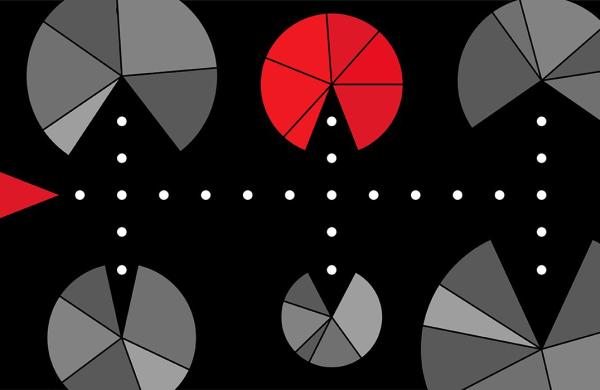The search for yield grows ever more challenging.
Ten-year Treasuries carry a paltry 0.65% payout. Stretch out to 30-year government bonds, and payouts remain below 1.3%. The income derived from blue-chip bonds isn’t all that impressive, either. The iShares iBoxx $ Investment Grade Corporate Bond ETF (ticker: LQD) sports a current 30-day SEC yield of 3.31%.
Steve Frazier, who runs Wakefield, RI-based Frazier Investment Management, sees better income opportunities with preferred stocks these days. “You can get really good yields on high quality paper,” he says.
Preferred stocks have come to play a more prominent role in portfolios over the past decade, according to Brandon Rakszawski, director of ETF Development at VanEck. “As an asset class, they have grown substantially in terms of the number of new issues and the size of the asset base in the funds that own them,” he says.
Preferred stocks are a favorite vehicle for companies with steady, predictable cash flows. When the going gets rough, these companies can temporarily defer payments to preserve cash. These differ from bonds, which come with such tight restrictions and payment terms that they can force a company into bankruptcy. For that flexibility, firms issue higher coupon rates on preferred stocks than on their bonds.
Preferreds carry a set of features that place them in the middle of the stock and bond axis. As equities, they can suffer neck-snapping levels of volatility during market downdrafts. Yet like bonds, they produce more predictable levels of income than traditional common dividends.
Despite their volatility, compared to bonds, preferred dividend payments are not at high risk of being eliminated during downturns. Preferred dividends must be paid before a company’s common-stock dividends, and if suspended, will often have to be made up before the company resumes common-stock dividends.
With around $14 billion in assets, the iShares Preferred and Income Securities ETF (PFF) is the largest in its category. The fund owns preferred stocks across a range of sectors. The blended yield of all of the fund’s holdings stands at 4.68% and its expense ratio is 0.46%.
Financial firms account for a hefty 46% of the iShares fund, while utilities, REITs, and insurers make up another 34%. Banks and other financial firms tend to be heavy issuers of preferred stocks. Notably, banks are financially much stronger today than during the financial crisis, and the Fed’s move to backstop the financial system with an as needed pump-priming spigot suggest that bank stocks no longer carry the same risk they did a decade ago.
Still, “a lot of preferred stock funds have fairly high levels of exposure to financials, and diversifying away sector risk may make sense,” says Rakszawski. His firm offers the VanEck Vectors Preferred Securities ex Financials ETF (PFXF). Electric utilities make up about a third of the fund, while REITs, telecom firms, and healthcare device makers account for another 37%.
The VanEck fund carries an even more impressive 6.53% 30-day SEC yield and sports a 0.41% expense ratio.
One clear drawback of preferred stocks is that they are callable at the issuer’s discretion, after a certain time period has been in place. When interest rates drop, as has been the case recently, a decision to call (i.e. redeem) the stocks becomes more common. Rakszawski says that around 70% to 75% of the stocks in that VanEck fund contain call risk, “though mostly they’ll be callable in the future, not now.”
Another potential drawback of a general preferred stock ETF is a lack of selectivity in what the fund owns. Frazier says that “actively managed funds make more sense because they can screen out holdings to ensure that the portfolio is focused on the highest quality issuers.”
The First Trust Preferred Securities and Income ETF (FPE) is an example of an actively-managed ETF. The focus on the highest quality issuers means that the 30-day SEC yield isn’t quite as competitive as the VanEck fund, at 4.42%. The 0.85% expense ratio is also high for the ETF category.
Mutual funds that focus on preferred stocks often employ debt leverage to juice returns. The Nuveen Preferred & Income Securities Fund (JPS), for example, owns $2 billion in preferred stocks outright, and owns another $1.2 billion in such stocks that are paid for with government bond borrowings. That leverage helps magnify returns, and the Nuveen fund currently yields around 9.5%.
The cost to deploy that leverage doesn’t come cheap. The Nuveen fund carries a 2.51% expense ratio.
To be clear, preferred stocks, with their exposure to equity markets and not bond markets, has put them under pressure this year. Using debt leverage as some mutual funds do, make them even more volatile. The Nuveen fund, for example, is off 29% year-to-date. The VanEck ETF, in contrast, without the use of leverage, has fallen less than 20%.
Those kinds of returns mean that “conservative income-seeking clients won’t likely want to own these,” says Frazier. “They’re more suitable for clients that can handle equity-like volatility,” he says. That level of volatility is quite unusual. Back in 2008, preferred stocks fell sharply before making an equally vigorous comeback in 2009 and 2010. Most years, preferred stocks, and the funds they own, move at a snail’s pace. The iShares Preferred and Income Securities ETF, for example, has a beta of just 0.12.
The first quarter of 2020 will surely go down as one of the most stressful periods for advisors and their clients of the modern era. Yet deep value opportunities are emerging. And preferred stocks are shaping up to be one of the more compelling areas to focus upon in the income segment of the market, especially in a world of vanishingly small bond yields.
David Sterman, CFP, is President of New Paltz, NY-based Huguenot Financial Planning






